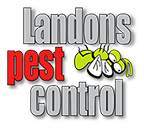
Behavior:
On dogs, adult brown dog ticks can typically be found on the ears and between the toes, while younger or immature ones attach along the dog’s back. Knowing proper dog tick removal is essential. When not feeding on a host, brown dog ticks can be found both outside and inside, although they generally prefer the warm, dry conditions inside homes. Brown dog ticks are unusual among ticks in that they can complete their entire life cycle indoors, allowing them to establish populations in colder climates. Outdoors, they’re known to scale up shrubs, grass and other vegetation, attaching themselves to passing hosts such as dogs, deer, rabbits and even humans. Brown dog ticks are notorious for infesting homes once brought inside, typically via pets such as dogs. Once inside, female ticks will drop off of their host and lay eggs in any crack or crevice they can find, potentially causing an explosion of hundreds of immature ticks after a few weeks. They typically move upward to higher ground, so eggs are often deposited in openings near wall hangings, ceiling, or roofs, promoting host encounters. They can also be found in cracks around baseboards, window frames and door frames. These dark brown eggs are usually laid in masses of 1,000-3,000. Once they hatch, the larval ticks will usually feed on pets like dogs or cats, but can also be found on humans. Both adult and larval brown dog ticks are capable of surviving without feeding for up to eight months. Aside from catching a ride inside on a household pet, possums, raccoons and other wildlife can carry these ticks into a yard, after which they can take shelter in doghouses and beneath decks.
Prevention:
The best way to prevent brown dog ticks is awareness of dog surroundings and dog prevention medications. Keeping pet areas clean and free of debris can help locate engorged ticks looking to lay eggs and remove them from the house. Brown dog tick treatment for pets is also an important prevention tool. Pets should be treated with flea and tick repellent as necessary. If an infestation is discovered, the occupant or owner of the infested home or kennel must thoroughly clean the area and remove all debris to eliminate as many ticks as possible. Pet bedding and resting areas should receive careful attention. The dog or pet must be treated, preferably by a veterinarian or grooming parlor, on the same day of treatment, either before or while the premises are being treated.
